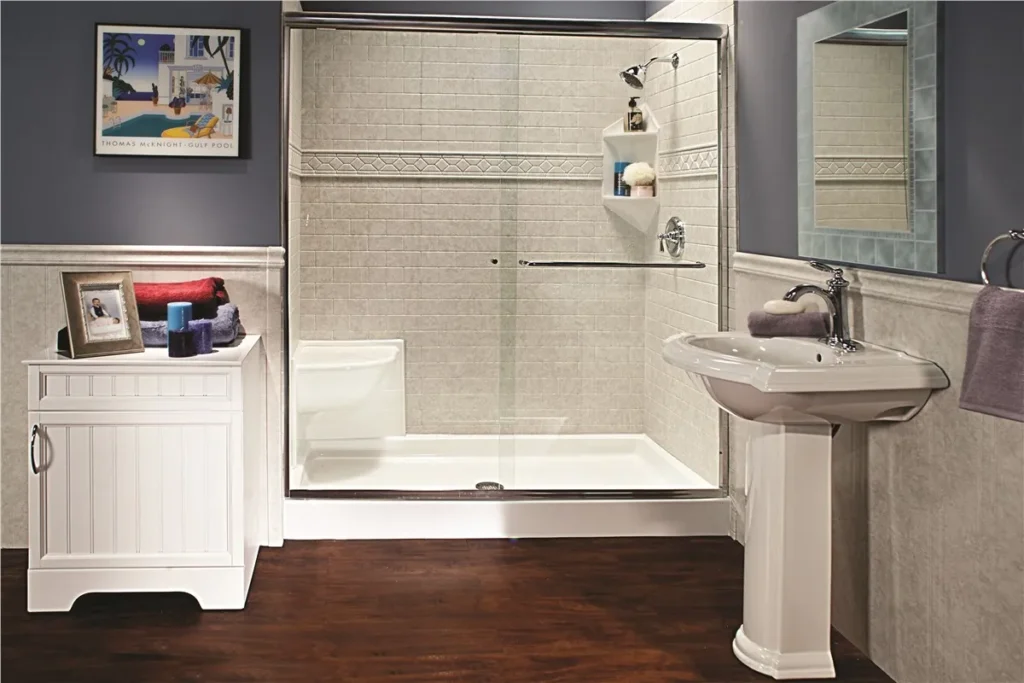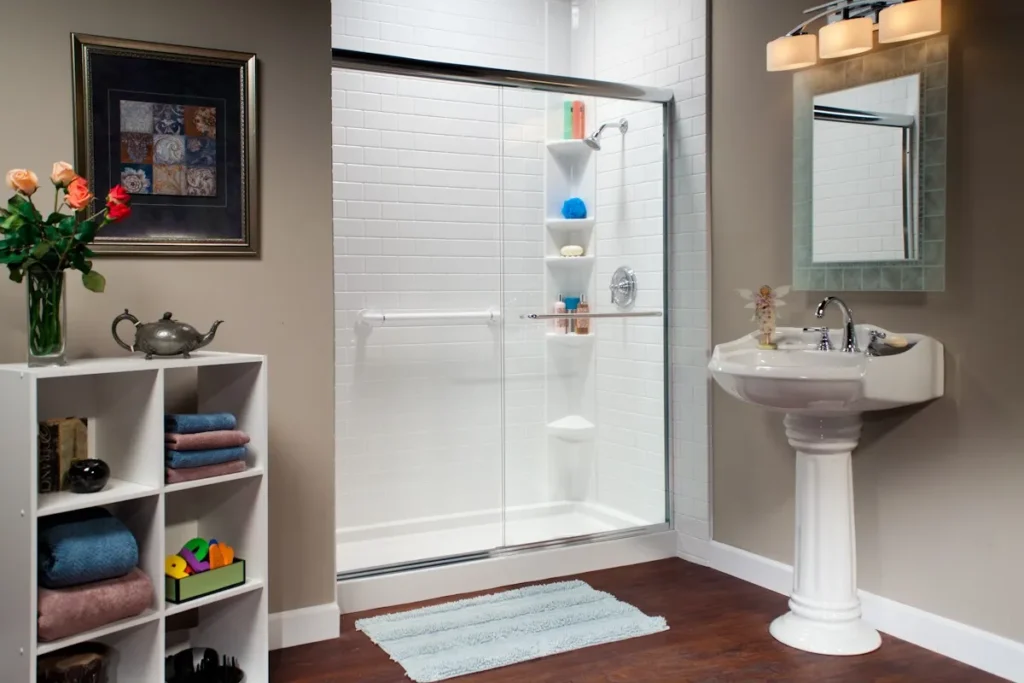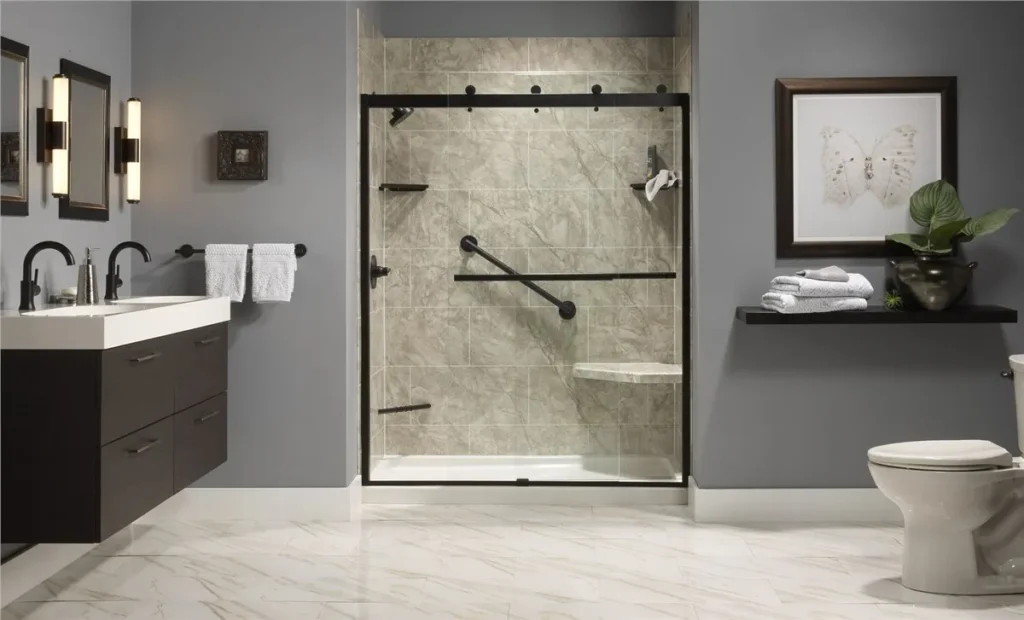Luxury Meets Accessibility: Designing the Perfect Walk-in Shower for Your Needs
Luxury and accessibility seldom go hand in hand, especially when it comes to bathroom design. However, with the advent of modern technology and innovative design solutions, it’s now possible to create a walk-in shower that is both luxurious and accessible. A walk-in shower not only adds a touch of elegance to your bathroom but also offers a practical solution for those with mobility issues. Whether you’re planning to renovate your existing bathroom or designing a new one, incorporating a walk-in shower into your design can be a game-changer. In this blog, we’ll explore the various design elements and features that make the perfect walk-in shower for your needs. From safety features to luxurious finishes, we’ll cover it all. So, let’s dive in and discover how luxury meets accessibility in the world of walk-in shower.
Importance of Walk-In Showers in Modern Bathroom Design
As our population ages, the need for accessible bathroom design is becoming increasingly important. Walk-in showers offer a level of safety and convenience that traditional bathtubs simply cannot match. For those with mobility issues or disabilities, stepping in and out of a bathtub can be challenging and even dangerous. With walk-in showers, there are no barriers to entry, making them the perfect option for those with limited mobility. Additionally, walk-in showers offer a sleek and modern look that adds value to any bathroom design.
Safety Features to Consider
When it comes to designing an accessible walk-in shower, safety should be your top priority. Here are some features to consider:
- Non-slip flooring: This is essential to prevent slips and falls, especially in wet areas. Non-slip tiles or a textured shower base are great options.
- Grab bars: These provide stability and support for those with limited mobility. They should be strategically placed in areas where they can be easily reached.
- Shower seat: A built-in or removable shower seat allows for comfortable seating while showering, making it easier for those who have difficulty standing for extended periods.
- Handheld showerhead: This feature provides flexibility and ease of use as it can be adjusted to accommodate different heights and needs.
These safety features not only make the walk-in shower accessible but also create a sense of security and peace of mind.
Luxurious Design Elements
Now, let’s talk about the luxury aspect of walk-in showers. While safety is essential, it doesn’t mean you have to compromise on style and elegance. Here are some design elements that can add a touch of luxury to your walk-in shower:
- Rainfall showerhead: This type of shower head provides a spa-like experience with its gentle and soothing water flow.
- Frameless glass enclosure: A frameless glass enclosure gives the illusion of more space and adds a modern and elegant look to your shower.
- Built-in niches: These offer convenient storage for toiletries without taking up valuable space in the shower.
- High-quality materials: Consider using high-end materials like marble or granite for the walls and flooring to elevate the overall look of your walk-in shower.
Incorporating these design elements can transform your walk-in shower from a practical necessity to a luxurious retreat.

Types of Walk-in Showers
When designing a walk-in shower, there are various options to choose from depending on your needs and preferences. Here are some popular types of walk-in showers:
- Curbless showers: These have no barriers or steps, providing easy access for those with mobility issues.
- Roll-in showers: Similar to curbless showers, these also have no barriers but offer enough space for a wheelchair to roll in comfortably.
- Corner showers: These are perfect for smaller bathrooms as they fit snugly in the corner while still providing ample space inside the shower area.
- Doorless showers: As the name suggests, these do not have any doors, making them easily accessible and visually appealing.
- Walk-in tubs: For those who prefer the option of a bathtub, walk-in tubs offer a low step-in height and built-in seating for added accessibility.
Each type has its own unique advantages, so it’s essential to consider your specific needs when choosing the right walk-in shower for you.
Choosing the Right Size and Layout
When it comes to size and layout, there is no one-size-fits-all solution for walk-in showers. The size will depend on the available space in your bathroom and your personal preferences. However, here are some tips to keep in mind:
- Minimum shower size: The minimum recommended size for a walk-in shower is 36 inches by 36 inches. This provides enough room for comfortable movement inside the shower.
- Door placement: If you opt for shower door, make sure it opens outward instead of inward to avoid any obstructions inside the shower.
- Accessibility: Consider designing your walk-in shower with enough space for a wheelchair or walker if needed.
- Layout: The layout of your walk-in shower should be functional and convenient, with easy access to all necessary features.
By considering these factors, you can create a walk-in shower that is both beautiful and practical.
Materials Used in Walk-in Showers
The materials used in your walk-in shower will not only determine its aesthetic appeal but also its durability and maintenance requirements. Here are some commonly used materials for walk-in showers:
- Tile: This is a popular and versatile option, with various sizes, shapes, and colors to choose from. It’s durable, easy to clean, and can add a touch of luxury to your shower.
- Stone: If you want a luxurious and natural look, stone is a great option. It’s available in different types such as marble, granite, and limestone, each with its own unique characteristics.
- Acrylic: This material is lightweight, affordable, and low-maintenance. It can be molded into different shapes and sizes, making it a popular choice for walk-in showers.
- Glass: A frameless glass enclosure is both functional and visually appealing. It’s easy to clean and adds a modern touch to your bathroom.
- Fiberglass: Similar to acrylic, fiberglass is a lightweight and budget-friendly option. It’s easy to install and comes in a variety of colors and designs.
Ultimately, the material you choose will depend on your personal preferences, budget, and maintenance requirements.

Customization Options for Your Needs
One of the great things about walk-in showers installations is their customizability. You can design your shower to meet your specific needs and preferences, making it a truly personalized space. Here are some customization options to consider:
- Built-in seating: As previously mentioned, adding built-in seating in your shower can provide comfort and convenience for those who have difficulty standing.
- Multiple showerheads: For a spa-like experience, you can install multiple shower heads such as a rainfall shower head or body jets.
- Lighting: Adequate lighting is essential in any bathroom, but you can also incorporate accent lighting in your walk-in shower for added ambiance.
- Benchtops: If you opt for a curbless or roll-in shower, consider installing a benchtop for added stability and storage space.
- Grab bars: These are essential for safety, especially for those with mobility issues. You can choose from various styles and finishes to match your bathroom’s aesthetic.
By customizing your walk-in shower, you can create a space that not only meets your needs but also reflects your personal style and taste.
Installation Process of Walk-in Showers
The installation process of a walk-in shower may vary depending on the type, size, and specific features you choose. It’s essential to consult with a professional contractor or plumber to ensure proper installation and avoid any issues down the road. Here are some key steps involved in the installation process:
- Planning and design: This is where you determine the size, layout, materials, and features of your walk-in shower.
- Prepare the area: The existing bathroom must be cleared out before any installation work can begin. This includes removing old fixtures, tiles, and flooring.
- Install plumbing: Installing the necessary plumbing fixtures such as drains and water supply lines is crucial for proper functioning of your walk-in shower. This step may also involve creating a sloped floor to ensure proper drainage.
- Install walls and flooring: Once the plumbing is in place, the walls and flooring can be installed. This includes waterproofing materials to prevent water damage.
- Install shower fixtures: After the basic structure is complete, it’s time to install your chosen shower fixtures such as faucets, showerheads, and doors (if applicable).
The duration of installation will depend on various factors such as the complexity of your design and any unforeseen issues that may arise during the process. It’s important to work with experienced professionals who can ensure a smooth and successful installation of your walk-in shower.

In Conclusion
Walk-in showers offer both functionality and style for any bathroom. By considering important factors such as size, materials, customization options, and the installation process, you can create a walk-in shower that meets your specific needs and adds value to your home. Whether you choose a curbless or roll-in shower, or opt for additional features such as built-in seating and multiple shower heads, there are endless possibilities to design a beautiful and accessible walk-in shower. So why not consider upgrading your bathroom with a walk-in shower today? Your future self will thank you for it! Let’s make bathing easier and safer for everyone.Â
https://www.google.com/maps?cid=11456591547691287671









